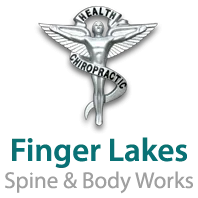Does Back Pain Go Away On Its Own?
Eighty percent of people suffer from back pain at some
What Causes Back Pain?
The back is a complicated structure of bones, joints,
ligaments, and muscles. You can sprain ligaments,
strain muscles, rupture disks, and irritate joints, all ofwhich can lead to back pain. While sports injuries or
accidents can cause back pain, sometimes the simplest
of movements-for example, picking up a pencil
from the floor- can have painful results. In addition,
arthritis, poor posture, obesity, and psychological stress can cause or complicate back pain. Back pain can also directly result from disease of the internal organs, such as kidney stones, kidney infections, blood clots, or bone loss.
Back injuries are a part of everyday life, and the spine is quite good at dealing with these often "pulled" muscles. These very minor injuries usually heal within 1 or 2 days. Some pain, however, continues. What makes it last longer is not entirely understood, but researchers suspect that the reasons may include stress, mood changes, and the fear of further injury that may prevent patients from being active. In addition, sometimes a painful injury or disease changes the way the pain signals are sent through the body, and, even after the problem has gone away or is inactive, the pain signals still reach the brain. It is as if the pain develops a memory that keeps being replayed.
Will Back Pain Go Away on Its Own?
Until recently, researchers believed that back pain would heal on its own. We have learned, however, that this is not true. A recent study showed that when back pain is not treated, it may go away temporarily, but will most likely return. The study demonstrated that in more than 33% of the people who experience low back pain, the pain lasts for more than 30 days. Only 9% of the people who had low-back pain for more than 30 days were pain free 5 years later.1 Another study looked at all of the available research on the natural history of low-back pain. The results
showed that when it is ignored, back pain does not go away on its own, but continues to affect people for long periods after it first begins.2
What Can I Do to Prevent Long-Term Back Pain?
If your back pain is not resolving quickly, visit your doctor of chiropractic. Your pain will often result from mechanical problems that your doctor of chiropractic can address. Many chiropractic patients with relatively long-lasting or recurring back pain feel improvement shortly after starting chiropractic treatment.3 The relief is often greater after a month of chiropractic treatment
than after seeing a family physician.4 Chiropractic spinal manipulation is a safe and effective
spine pain treatment. It reduces pain, decreases medication, rapidly advances physical therapy, and requires very few passive forms of treatment, such as bed rest.5
How Can I Prevent Back Pain?
• Don't lift by bending over. Instead, bend your hips and knees and then squat to pick up the
object. Keep your back straight, and hold the object close to your body.
• Don't twist your body while lifting.
• Push, rather than pull, when you must move heavy objects.
• If you must sit for long periods, take frequent breaks and stretch.
• Wear flat shoes or shoes with low heels.
• Exercise regularly. An inactive lifestyle contributes to lower-back pain.
What Should I Tell My Doctor of Chiropractic?
Before any treatment session, tell your doctor of chiropractic if you experience any of the following:
• Pain goes down your leg below your knee.
• Your leg, foot, groin, or rectal area feels numb.
• You have fever, nausea, vomiting, stomach ache, weakness, or sweating.
• You lose bowel control.
• Your pain is caused by an injury.
• Your pain is so intense you can't move around.
• Your pain doesn't seem to be getting better quickly
References
1. Hestbaek L, Leboeuf-Yde C, Engberg M, Lauritzen T, Bruun NH, Manniche C. The course of low-back pain in a general population. Results from a 5-year prospective study. J Manipulative Physiol Ther 2003 May; 26(4):213-9.
2. Hestbaek L, Leboeuf-Yde C, Manniche C. Low-back pain: what is the long-term course? A review of studies of general patient populations. Eur Spine J 2003 Apr;12(2):149-65.
3. Stig LC, Nilsson O, Leboeuf-Yde C. Recovery pattern of patients treated with chiropractic spinal manipulative therapy for long-lasting or recurrent low-back pain. J Manipulative Physiol Ther 2001 May;24(4):288-91.
4. Nyiendo J, Haas M, Goodwin P. Patient characteristics, practice activities, and one-month outcomes for chronic, recurrent low-back pain treated by chiropractors and family medicine physicians: a practice based feasibility study. J Manipulative Physiol Ther 2000 May;23(4):239-
45.
5. Time to recognize value of chiropractic care? Science and patient satisfaction surveys cite usefulness of spinal manipulation. Orthopedics Today 2003 Feb; 23(2):14-15.
